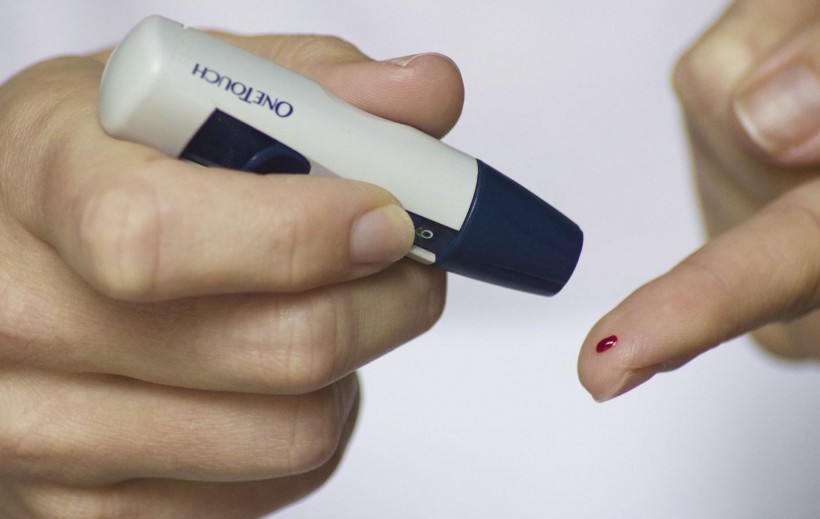Everything You Need to Know About Type 1 Diabetes
Warning: Undefined variable $post in /home/dietofli/public_html/wp-content/plugins/code-snippets/php/snippet-ops.php(584) : eval()'d code on line 3
Warning: Attempt to read property "ID" on null in /home/dietofli/public_html/wp-content/plugins/code-snippets/php/snippet-ops.php(584) : eval()'d code on line 3
The estimated reading time is 4 minutes
Warning: Undefined variable $post in /home/dietofli/public_html/wp-content/plugins/oxygen/component-framework/components/classes/code-block.class.php(115) : eval()'d code on line 3
Warning: Attempt to read property "ID" on null in /home/dietofli/public_html/wp-content/plugins/oxygen/component-framework/components/classes/code-block.class.php(115) : eval()'d code on line 3

Diabetes is of two types – Type 1 and Type 2. In this article, we will explain everything you need to know about Type 1 diabetes – what is it, what is the work of insulin, the factors causing it, symptoms, diagnosis, and more.
What is Type 1 Diabetes?
When the immune system of an individual destroys beta cells, the cells in their pancreas, type 1 diabetes takes place. This kind is also referred to as insulin-dependent diabetes.
What is the Work of Insulin?
Insulin is a hormone, which helps in the moving of glucose, or sugar, into the body’s tissues. This hormone is used as a fuel by cells. When beta cells get damaged due to type 1 diabetes, the process stops. Due to the absence of insulin, glucose does not move into the cells. It rather starts building up in the blood resulting in the starvation of cells. Matt Schmidt of Diabetes 365 explains that this leads to high blood sugar that can cause:
- Damage to an individual’s body: High glucose levels in a person’s blood, over time, may harm the small blood vessels and nerves in their heart, kidneys, and eyes. They are also likely to make them more prone to atherosclerosis, or hardening of the arteries, that can further result in strokes and heart attacks.
- DKA (Diabetic Ketoacidosis): Rather than glucose, the body of a person breaks down fat cells when it does not get sufficient glucose for fuel. This results in the creation of chemicals known as ketones. (1)
The sugar that the liver stores is released for help. However, the body cannot use this without insulin. Therefore, it builds up along with acidic ketones in the blood. This combination of acid buildup, dehydration, and extra glucose is called DKA and may be severe if not treated immediately.
- Weight Loss: When a person suffering from diabetes pees, the glucose that goes out takes calories away with it. This is why many people who have high blood sugar lose weight. Dehydration also plays its role.
- Dehydration: A diabetic is likely to pee more when their blood contains extra sugar. This is a way in which the body gets rid of it. With the urine goes a large amount of water, which causes dehydration.
Who Suffers from Type 1 Diabetes?
The disease is very rare since only 5% of people with diabetes suffer from Type 1. Although it affects both genders equally, it is more common among whites as compared to African-Americans. Moreover, this disease can occur at any age, although the usual age is below 20. (2)
Causes of Type 1 Diabetes
The causes of Type 1 diabetes are not known to doctors completely. However, it is understood that genes of an individual play a role. It is also known that the disease can be a result of something in the environment, such as a virus, telling your immune system to attack your pancreas. Majority of the patients suffering from this kind of disease experience signs of attack, known as autoantibodies. These are generally present in every person who suffers from diabetes.
Symptoms of Type 1 Diabetes
The following symptoms are usually mild, but they may become intense:
- Frequent infections of the vagina, urinary tract, or the skin
- Labored, heavy breathing
- Blurred vision
- Fatigue
- Unexplained weight loss
- Frequent urination
- Belly pain
- Vomiting and nausea
- Dry mouth
- Increasing hunger
- Heavy thirst
The indications of an emergency for this disease include:
- Pain in the belly
- Fruity smell to the breath
- Rapid breathing
- Confusion and shaking
- Loss of consciousness
Diagnosis of Type 1 Diabetes
If the doctor feels a person might be suffering from type 1 diabetes, he checks the blood sugar levels. He tests urine for glucose or other chemicals that a person’s body produces when he does not have enough insulin.
Currently, there is not any prevention for the disease.
When a person experiences the symptoms of type 1 diabetes, he must consult a doctor. It is necessary to provide the body with insulin time to time and eat foods that do not contain sugar, or extra sugar in order to maintain blood sugar levels. (3)














